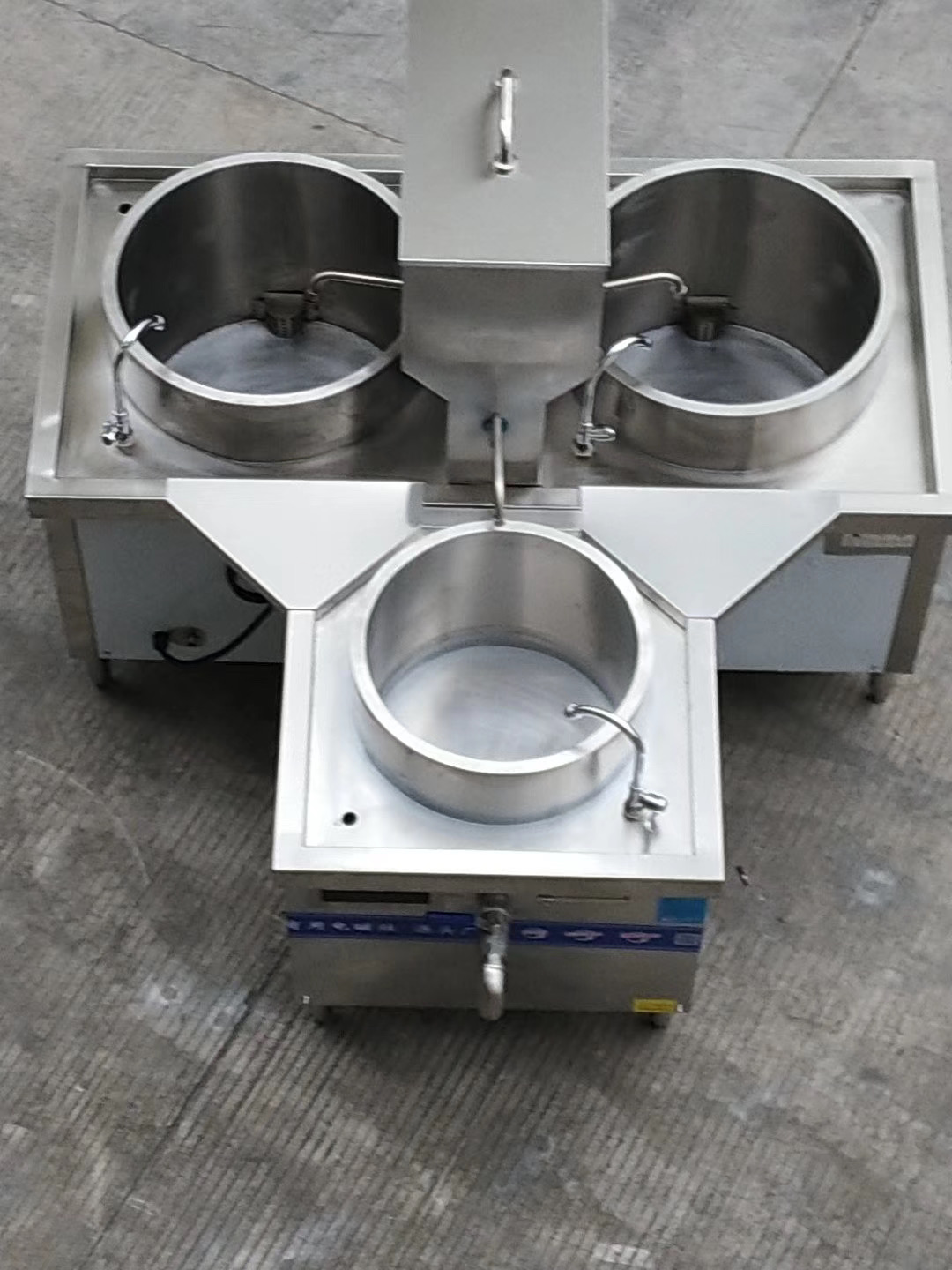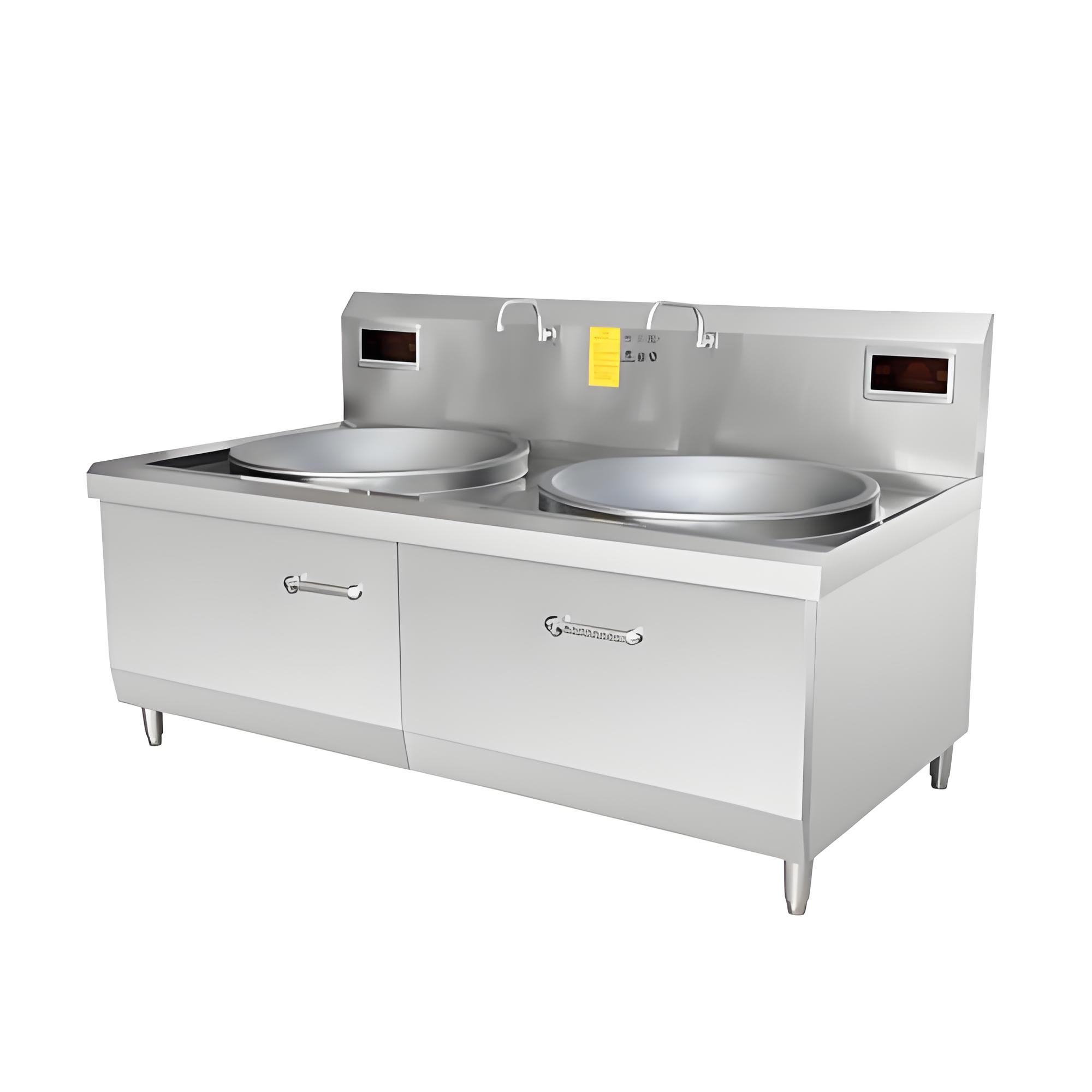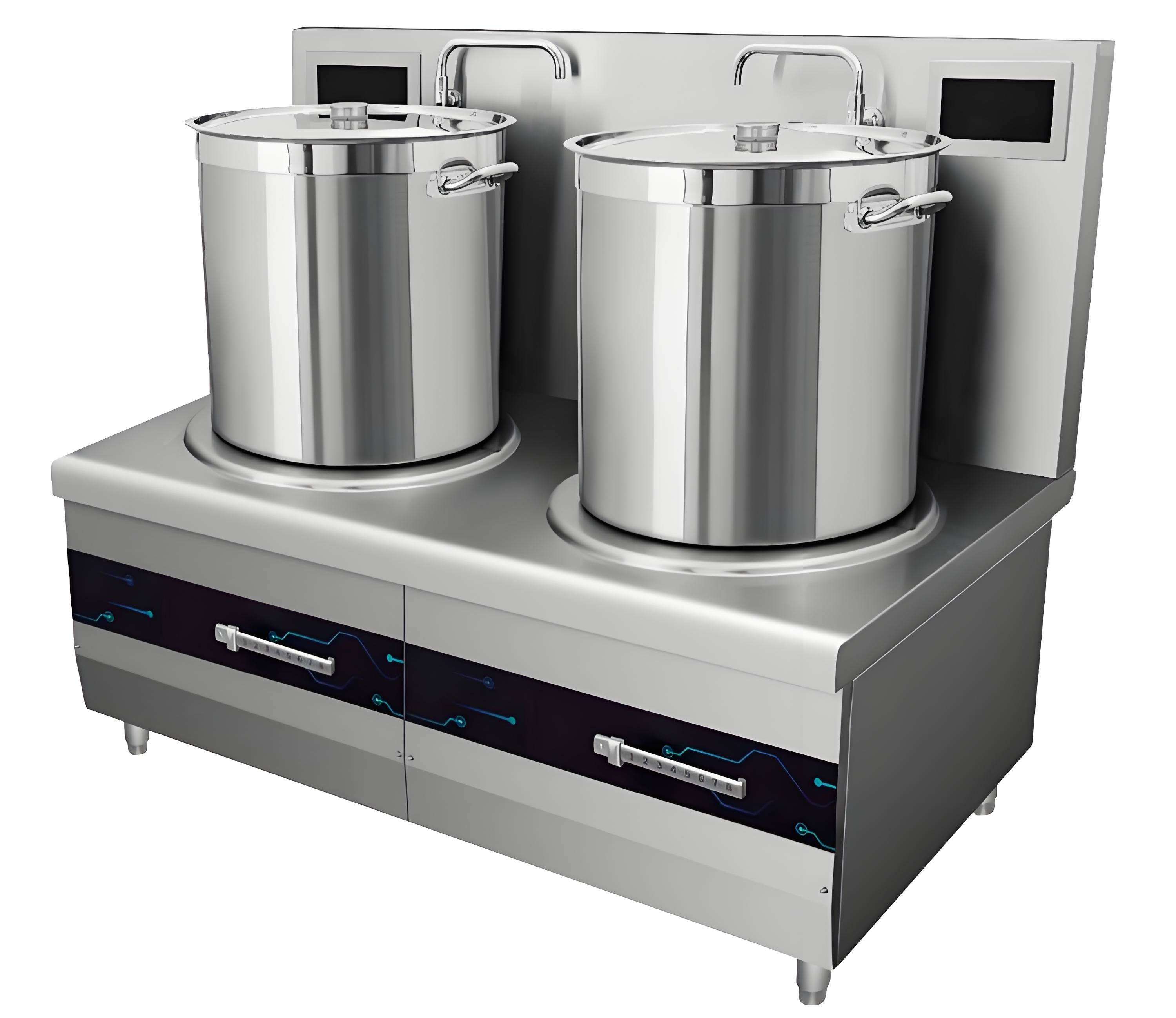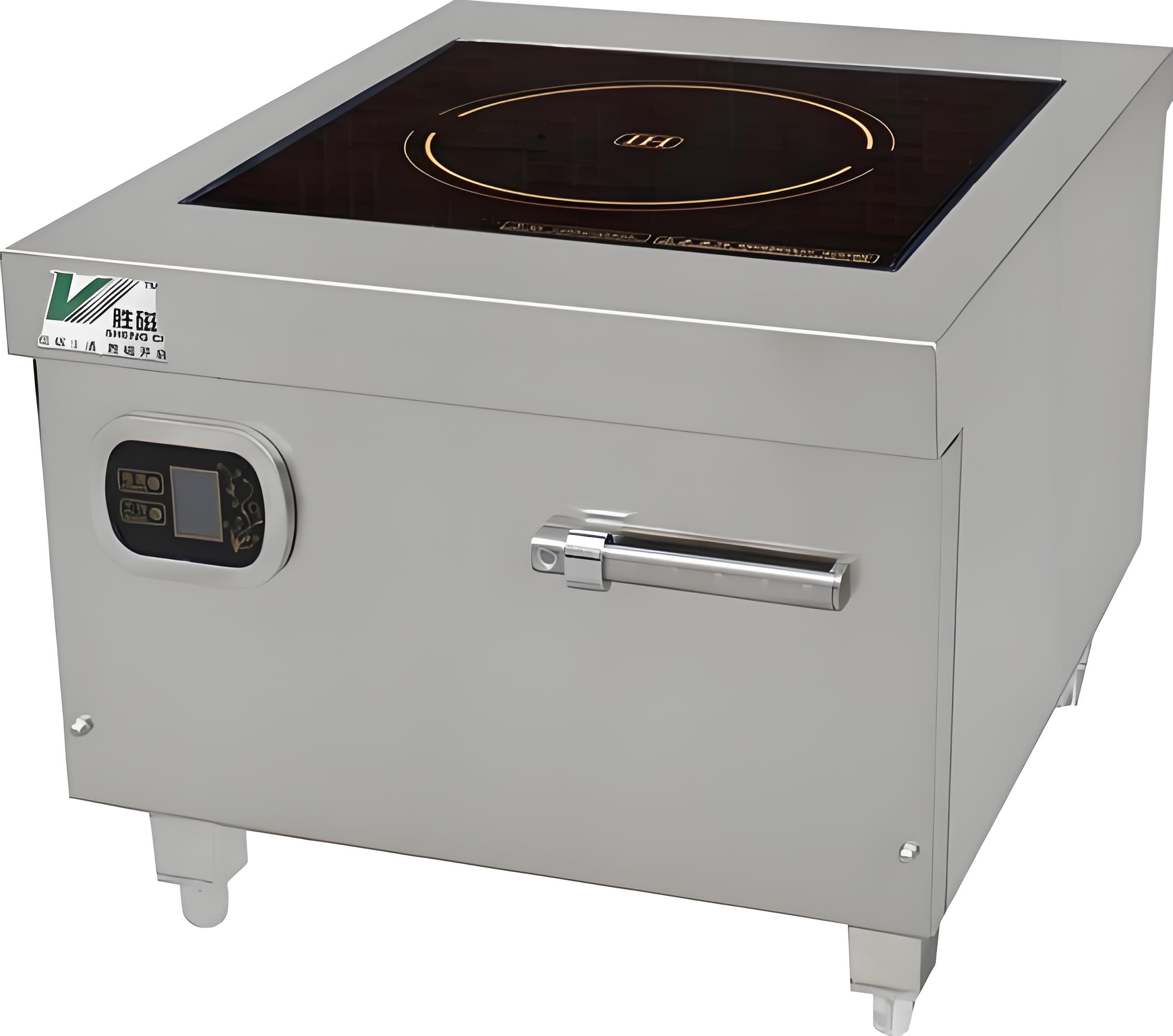As someone who’s been immersed in the commercial kitchen equipment industry for over a decade, I’ve seen firsthand how the choice of equipment can make or break a business. One question I often hear from restaurant owners, caterers, and kitchen managers is whether it’s worth investing in a branded commercial induction cooker or if an off-brand (generic) model will do the job just as well. The decision isn’t always straightforward, especially when budgets are tight, but the differences between the two can have a significant impact on performance, longevity, and overall value. In this article, I’ll break down the key distinctions between branded and off-brand commercial induction cookers, drawing from my experience and real-world examples to help you make an informed choice.

Why Induction Cookers Matter in Commercial Kitchens
Before diving into the differences, let’s set the stage. Commercial induction cookers are a staple in modern kitchens due to their energy efficiency, precision cooking, and safety features. Unlike gas or traditional electric stoves, induction cookers use electromagnetic fields to heat cookware directly, offering faster cooking times and a cooler kitchen environment. However, not all induction cookers are created equal. Branded models, typically produced by well-known manufacturers, often come with a higher price tag, while off-brand options promise similar functionality at a lower cost. So, what sets them apart? Let’s explore the key factors: build quality, performance, safety, after-sales support, and long-term cost.
Build Quality: Durability That Stands the Test of Time
One of the most noticeable differences between branded and off-brand induction cookers is their build quality. In a busy commercial kitchen, equipment is subjected to constant use, high temperatures, and occasional rough handling. Branded cookers are typically designed with premium materials to withstand this demanding environment.
For example, I once consulted for a mid-sized restaurant chain that invested in branded induction cookers for their kitchens. The units featured stainless steel housings, reinforced glass-ceramic surfaces, and robust internal components. After three years of daily use, these cookers showed minimal wear, with only routine maintenance needed. In contrast, a smaller café I worked with opted for off-brand units to save costs. Within a year, one unit had a cracked cooking surface, and another developed issues with its cooling fan due to cheaper plastic components overheating.
Off-brand cookers often cut corners with lower-grade materials, such as thinner steel or less durable glass, which can lead to cracks, warping, or electrical failures over time. While they may look similar to branded models at first glance, the internal components—like circuit boards and cooling systems—are often less reliable. This doesn’t mean every off-brand cooker is poorly made, but the risk is higher, especially in high-volume settings.
Performance: Precision and Power
In a commercial kitchen, consistent performance is non-negotiable. Branded induction cookers are engineered to deliver precise temperature control and reliable power output, which are critical for tasks like searing, simmering, or high-volume cooking. Most branded models undergo rigorous testing to ensure they maintain stable performance under heavy loads.
I recall a project with a high-end hotel kitchen where branded induction cookers were used for a banquet service. The chefs praised the units for their ability to maintain exact temperatures, allowing them to execute complex dishes with consistency. The cookers also had high wattage options (typically 3.5kW or more), enabling rapid boiling and frying, which is essential during peak hours.
Off-brand cookers, on the other hand, often advertise similar wattage but may struggle with power stability. In one instance, a catering company using off-brand units noticed that the cookers would occasionally lose power during extended use, leading to uneven cooking and delays. Additionally, off-brand models may lack advanced features like multi-zone cooking or programmable settings, which branded cookers often include to streamline operations in busy kitchens.

Safety: A Critical Consideration
Safety is paramount in any commercial kitchen, and this is another area where branded induction cookers tend to shine. Reputable manufacturers invest heavily in safety features to protect both staff and equipment. Common features in branded models include:
Overheat protection: Automatically shuts off the unit if it detects excessive temperatures.
Pan detection: Ensures the cooker only activates when compatible cookware is present, reducing energy waste and burn risks.
Surge protection: Shields the unit from electrical fluctuations, which are common in commercial settings.
In contrast, off-brand cookers may skimp on these features to cut costs. I once advised a small restaurant that had purchased off-brand induction cookers to save money. Within months, one unit malfunctioned because it lacked proper overheat protection, posing a fire hazard. While not all off-brand models are unsafe, the lack of consistent quality control increases the risk of issues like electrical shorts or overheating.
After-Sales Support: The Hidden Value of Branding
One of the most overlooked differences is after-sales support. Branded manufacturers typically offer warranties, technical support, and access to spare parts, which are crucial for minimizing downtime in a commercial kitchen. For example, a branded cooker I installed in a large restaurant chain came with a three-year warranty and a dedicated service hotline. When a minor issue arose with a control panel, the manufacturer sent a technician within 24 hours, and the repair was covered.
Off-brand cookers, by contrast, often come with limited or no warranties, and finding spare parts can be a nightmare. In one case, a client purchased an off-brand unit online, only to discover that replacement parts were unavailable when the cooling fan failed. The entire unit had to be replaced, negating any initial cost savings. Without reliable support, downtime can cost a business thousands in lost revenue, especially during peak service hours.
Long-Term Cost: Value Beyond the Price Tag
While off-brand cookers are undeniably cheaper upfront, the total cost of ownership often tells a different story. Branded cookers may have a higher initial price, but their durability, energy efficiency, and lower maintenance costs make them more cost-effective over time. For instance, branded models often use advanced inverter technology to optimize energy consumption, reducing electricity bills in high-use environments.
To illustrate, I worked with a catering business that initially chose off-brand cookers to equip a new kitchen. Within two years, they had replaced three units due to failures, and their energy bills were higher than expected due to inefficient designs. When they switched to branded models, their maintenance costs dropped, and the cookers’ efficiency saved them an estimated 15% on energy costs annually.
Here’s a comparison table to summarize the key differences:
| Feature | Branded Induction Cookers | Off-Brand Induction Cookers |
|---|---|---|
| Build Quality | High-grade materials, durable | Often lower-grade, less durable |
| Performance | Precise, stable, high power | Inconsistent, fewer features |
| Safety Features | Advanced (e.g., overheat protection) | Basic or absent |
| After-Sales Support | Comprehensive warranties, parts availability | Limited or no support |
Real-World Examples: Branded vs. Off-Brand in Action
Let me share two stories from my experience to highlight the practical differences:
High-Volume Restaurant Chain
A regional restaurant chain invested in branded induction cookers for their new locations. The units were used heavily, often running 12 hours a day. After five years, 90% of the cookers were still operational, with only routine maintenance required. The chain’s chefs appreciated the consistent performance and safety features, which helped maintain a smooth workflow during busy shifts. The manufacturer’s support team also provided quick repairs, minimizing downtime.
Small Café with Off-Brand Units
A small café owner, working on a tight budget, purchased off-brand induction cookers from an online marketplace. Initially, the units worked well, but within 18 months, two of the three cookers developed issues: one had a faulty control panel, and another stopped heating consistently. Replacement parts were unavailable, and the lack of warranty meant the owner had to buy new units, erasing the initial savings.
These examples underscore that while off-brand cookers may seem appealing for their low price, they often lead to higher costs and headaches in the long run.

How to Choose the Right Induction Cooker
If you’re deciding between a branded and off-brand commercial induction cooker, here are my practical tips to guide your decision:
Assess Your Kitchen’s Needs: High-volume kitchens need reliable, high-power units, making branded cookers a better fit. For low-volume settings, like a small café, an off-brand model might suffice if chosen carefully.
Check Certifications: Look for branded cookers with certifications like CE or UL, which ensure safety and quality standards. Off-brand models may lack these certifications, increasing risks.
Evaluate Warranty and Support: Prioritize brands with strong after-sales support, including warranties and accessible spare parts. Ask suppliers about service turnaround times.
Test Before Buying: If possible, test the cooker or request a demo to assess its performance and ease of use. Branded manufacturers often provide this option.
Consider Long-Term Costs: Factor in maintenance, energy efficiency, and replacement costs, not just the upfront price.
If you’re on a tight budget, I understand the temptation to go for an off-brand model. In such cases, research the supplier thoroughly, read user reviews, and ensure the unit has basic safety features and a short-term warranty.
Maintenance Tips for Commercial Induction Cookers
Whether you choose a branded or off-brand cooker, proper maintenance is key to maximizing its lifespan. Here’s what I recommend:
Clean Daily: Wipe the cooking surface with a damp cloth and mild cleaner to remove grease and food splatter. Avoid abrasive materials that could scratch the glass.
Check Ventilation: Ensure the cooker’s cooling vents are free of dust and debris to prevent overheating. Clean them monthly with a soft brush.
Inspect Cookware: Use flat-bottomed, induction-compatible cookware to ensure efficient heating and prevent damage to the surface.
Schedule Regular Checks: For branded units, follow the manufacturer’s maintenance schedule. For off-brand units, have a technician inspect the internal components annually.
These steps can help both branded and off-brand cookers perform better and last longer.

The Bigger Picture: Investing in Your Kitchen’s Success
Choosing between a branded and off-brand commercial induction cooker ultimately comes down to your priorities: reliability versus initial cost. Branded cookers offer superior build quality, performance, safety, and support, making them ideal for high-demand kitchens where downtime is costly. Off-brand cookers can work for smaller operations with lighter usage, but they carry risks of inconsistent performance and limited support.
In my experience, investing in a branded cooker is like buying insurance for your kitchen’s efficiency and reputation. A reliable cooker ensures your chefs can focus on creating great food, your staff stays safe, and your business avoids unexpected repair costs. That said, if budget constraints push you toward an off-brand model, do your homework to minimize risks.
Conclusion: Make an Informed Choice
To sum up, branded commercial induction cookers stand out for their durability, precision, and support, making them a worthwhile investment for most commercial kitchens. Off-brand models may save money upfront but often come with compromises in quality, safety, and longevity. By understanding these differences and considering your kitchen’s specific needs, you can choose a cooker that balances performance and budget.
If you’re still unsure which option is right for your business, feel free to share your situation in the comments. I’m happy to offer tailored advice based on my years in the industry!

Frequently Asked Questions
1. Are branded induction cookers worth the higher price?
For high-volume kitchens, branded cookers are worth it due to their durability, performance, and reliable support. For small operations with light use, a well-researched off-brand model might suffice, but prioritize safety and warranty.
2. Can off-brand induction cookers handle heavy use?
Some off-brand cookers can handle moderate use, but they often lack the durability and power stability needed for heavy, continuous operation. Check user reviews and specifications carefully.
3. What safety features should I look for in a commercial induction cooker?
Look for overheat protection, pan detection, and surge protection. Branded models typically include these as standard, while off-brand models may not.
4. How can I tell if an off-brand cooker is reliable?
Check for certifications (e.g., CE, UL), read user reviews, and ensure the supplier offers at least a one-year warranty and access to spare parts.
5. Do branded cookers save money in the long run?
Yes, branded cookers often have better energy efficiency, lower maintenance costs, and longer lifespans, reducing the total cost of ownership compared to off-brand models.





